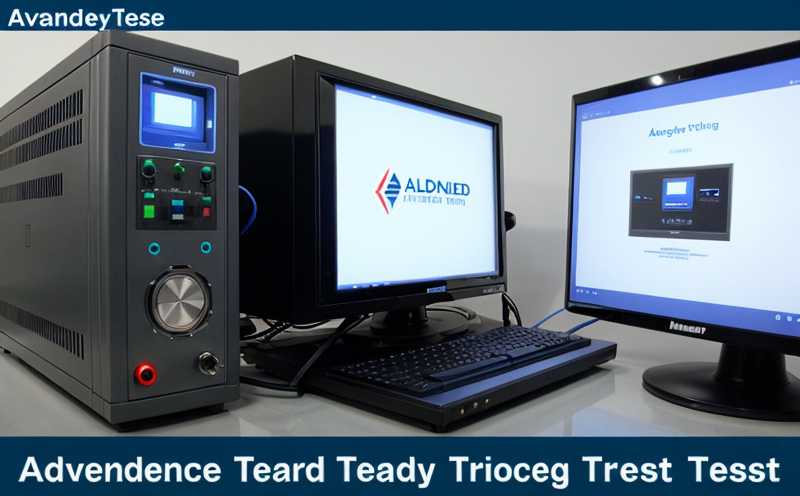ASTM F1388 Oxide Thickness in Semiconductor Processes Testing
The ASTM F1388 standard is a critical tool used within semiconductor and microchip manufacturing to ensure the integrity of oxide layers, which play a pivotal role in the performance and reliability of integrated circuits. This testing procedure focuses on measuring the thickness of silicon dioxide (SiO₂) films deposited during various stages of semiconductor fabrication processes.
The accuracy and precision of this test are paramount due to the minute nature of oxide films used in modern semiconductors. Oxide layers serve multiple functions including insulation, voltage control, and protection against diffusion of dopants. Any deviation from the specified thickness can lead to significant performance issues such as reduced device reliability or even complete failure.
The ASTM F1388 procedure involves the use of advanced measurement techniques like scanning electron microscopy (SEM), atomic force microscopy (AFM), X-ray photoelectron spectroscopy (XPS), and ellipsometry. These methods allow for non-destructive evaluation, providing reliable data on oxide thickness with high repeatability.
Specimen preparation is a critical step in ensuring accurate results. The test specimens are typically prepared by etching the oxide layer to expose the underlying silicon surface. This process requires precision to avoid contamination or damage that could affect measurement accuracy. Once prepared, the specimen can be analyzed using one of the aforementioned techniques.
The ASTM F1388 standard specifies a range of acceptable oxide thickness values depending on the specific semiconductor device and fabrication process. For example, in high-speed logic circuits, thinner oxides are preferred to minimize capacitance, whereas in power devices, thicker oxides may be necessary for better insulation properties.
Understanding these parameters is crucial for quality managers and compliance officers who must ensure that all processes adhere strictly to industry standards. R&D engineers rely on this test to optimize their fabrication techniques and improve product performance. Procurement teams also benefit as they can verify the consistency of materials supplied by vendors, ensuring that only high-quality oxides are used in production.
The importance of ASTM F1388 cannot be overstated given its role in maintaining the reliability and integrity of semiconductor devices. By adhering to this standard, manufacturers can ensure consistent performance across all manufactured units, thereby enhancing customer satisfaction and trust in their products.
Benefits
The implementation of ASTM F1388 oxide thickness testing offers numerous benefits to semiconductor manufacturers. Primarily, it enhances the quality and reliability of manufactured devices by ensuring that all oxide layers meet specified standards. This leads to longer product lifetimes and improved performance.
From a compliance perspective, adherence to this standard ensures that manufacturing processes are in line with international regulations and guidelines. This is particularly important for companies operating globally or dealing with international clients.
For R&D teams, ASTM F1388 provides a robust framework within which they can innovate and optimize their fabrication methods without compromising on quality standards. This fosters continuous improvement and innovation in the industry.
In summary, by leveraging ASTM F1388 oxide thickness testing, manufacturers can achieve higher product quality, enhanced reliability, improved compliance, and increased customer satisfaction.
Why Choose This Test
Selecting ASTM F1388 for oxide thickness measurement in semiconductor processes is a strategic decision that offers several advantages over alternative methods. One of the key reasons is its high accuracy and precision, which are essential for maintaining the integrity of oxide layers.
The ASTM F1388 standard provides clear guidelines on specimen preparation and measurement techniques, reducing variability and ensuring consistent results across different laboratories. This consistency is vital in a highly competitive industry where even small deviations can lead to significant issues.
Another advantage lies in the non-destructive nature of many of the testing methods employed under this standard. This allows for repeated measurements without compromising the integrity of the sample, enabling continuous monitoring and quality control throughout the manufacturing process.
The international recognition of ASTM F1388 also adds value to manufacturers. Standards recognized globally ensure that products meet the highest quality standards, which is crucial for export markets or when working with multinational clients.
In conclusion, choosing ASTM F1388 oxide thickness testing ensures that semiconductor manufacturers are equipped with a robust and reliable method to maintain high-quality standards in their production processes.
Customer Impact and Satisfaction
The impact of ASTM F1388 oxide thickness testing extends beyond the manufacturing floor; it directly influences customer satisfaction by ensuring that semiconductor products meet or exceed expected performance levels. When manufacturers adhere to this standard, they are able to deliver consistently reliable devices that perform as intended.
This reliability is particularly important for end-users who rely on semiconductors for critical applications such as automotive electronics, medical devices, and telecommunications systems. Knowing that their products come from a manufacturer committed to high-quality standards can significantly enhance trust and loyalty among customers.
In addition to performance enhancement, the use of ASTM F1388 also contributes to environmental sustainability by minimizing waste and resource inefficiency. By ensuring that only high-quality oxide layers are used in production, manufacturers reduce the need for rework or scrap, leading to cost savings and reduced environmental impact.
Moreover, compliance with this standard can open up new market opportunities for semiconductor companies by allowing them to compete more effectively on a global scale. The ability to demonstrate adherence to international standards is often a deciding factor in winning contracts and securing long-term partnerships.
In summary, the use of ASTM F1388 oxide thickness testing not only improves product quality but also enhances customer satisfaction, supports environmental sustainability, and opens up new market opportunities for semiconductor manufacturers.





